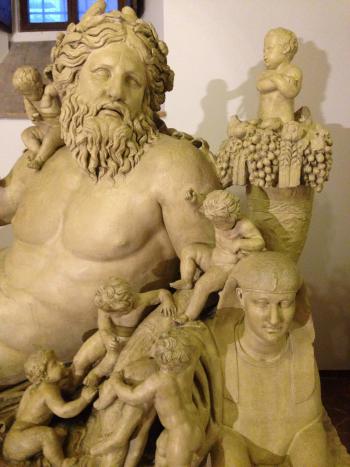Allegory of the Nile Cast
CAMS - Gypsotheca

Perhaps the most representative sculpture in the Roman section of the plaster cast gallery is the Allegoria del Nilo (Allegory of the Nile) whose imposing dimensions reproduce the actual size of the ordinal marble recovered from the Campo Marzio in Rome and now on display in the Vatican Museums. The plaster cast is a fine example of the technical excellence which can be attained in this field. It was assembled from an elaborate series of individual castings which were then fused together formimg an exact copy of the original sculpture. The latter is itself a 2nd century A.D. copy made of a lost original by a process which was the first step in a reproduction learning-curve of which the casts on display here represent the culmination.
This piece is the personification of an imaginary space essential to Roman culture: the land of Egypt, a place of luxuriant nature and spontaneously prolific harvests. A mighty, bearded old man, semi-reclining on a body of water with his torso raised, is surrounded by animals and symbolic creatures (such as the crocodile and the sphinx). He wears a leafy crown and holds a sheaf of ears in his right hand and in his left a horn of plenty while all around he is supported by a host of karpoi, an allegory of the abundant fruit to be reaped from the Nile’s cycle of floods.